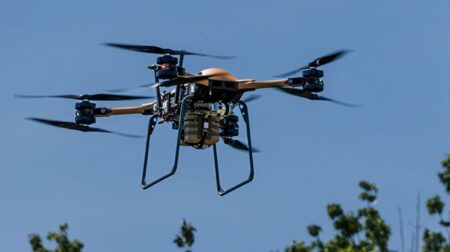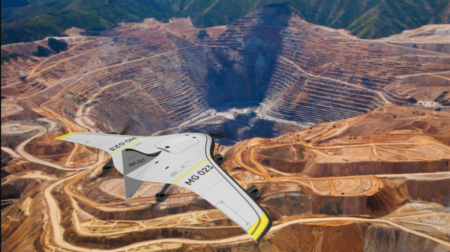Engineers at Stanford University have developed a drone landing system inspired by the way birds perch and carry objects.
With feet and legs like a peregrine falcon, the robotic platform can land and grip branches of varying shapes and sizes.
“It’s not easy to mimic how birds fly and perch,” said William Roderick, a graduate student at Standford. “After millions of years of evolution, they make take-off and landing look so easy, even among all of the complexity and variability of the tree branches you would find in a forest.”
Following work on both animal-inspired robots and bird-inspired aerial robotics, the researchers have built their own perching robot. The findings were recently published in Science Robotics.
The paper detailed how when attached to a quadcopter drone, the Stereotyped Nature-Inspired Aerial Grasper (SNAG) forms a robot that can fly around, catch and carry objects as well as perch on various surfaces.
In place of bones, SNAG has a 3D-printed structure – which took 20 iterations to perfect – and motors and fishing line stand-in for muscles and tendons.
Each leg has its own motor for moving back and forth and another to handle grasping. Inspired by the way tendons route around the ankle in birds, a similar mechanism in the robot’s leg absorbs landing impact energy and passively converts it into grasping force.
The result is that the robot has a strong and high-speed clutch that can be triggered to close in 20 milliseconds. Once wrapped around a branch, SNAG’s ankles lock and an accelerometer on the right foot reports that the robot has landed and triggers a balancing algorithm to stabilise it.
Roderick tested the system on a rail that launched the robot at different surfaces, at predefined speeds and orientations, to see how it performed in various scenarios. With SNAG held in place, Roderick also confirmed the robot’s ability to catch objects thrown by hand, including a prey dummy, a corn hole bean bag and a tennis ball. Lastly, SNAG ventured into the nearby forest for some trial runs in the real world.
Roderick said overall SNAG performed so well that next steps in development would likely focus on what happens before landing, such as improving the robot’s situational awareness and flight control.
While there are a range of applications, including search and rescue and wildfire monitoring the team hopes to use SNAG in environmental research.
“Part of the underlying motivation of this work was to create tools that we can use to study the natural world,” said Roderick. “If we could have a robot that could act like a bird, that could unlock completely new ways of studying the environment.”







